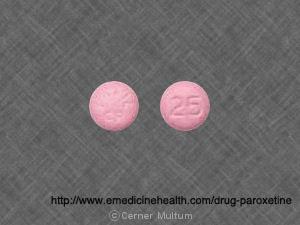Paxil Lawsuit
A Brief Guide to Filing a Paxil Lawsuit
What is Paxil?
Paxil, which is used to treat depression, social anxiety disorder and panic disorders, is the brand name for Paroxetine. Paxil comes as a tablet, an extended-release pill and a suspension (liquid)—the tablets and suspension may also be administered to treat obsessive-compulsive disorder, posttraumatic stress disorder and generalized anxiety disorder. The extended-release version may be applied to patients with premenstrual dysphoric disorder—psychological and physical symptoms that occur before menstrual periods. Paxil belongs to a class of medications known as selective serotonin-reuptake inhibitors. The drug is effective by increasing serotonin in the brain.
Paxil Side Effects:
Paxil side effects may arise regardless of dosage strength or adherence to intake instructions. Please tell your doctor if any of the below Paxil side effects are severe or persistent:
• Common Paxil Side Effects Include: headache; weakness; dizziness; difficulty concentrating; nervousness; forgetfulness; confusion; nausea; diarrhea; constipation; stomach pain; heartburn; gas; decreased appetite; changes in sex drive; dry mouth; sensitivity to light; tightness in throat; weight fluctuations; tenderness or swelling of the joints; muscle weakness; sore teeth; unusual dreams; irregular menstruation
Some Paxil side effects are regarded as severe. If you experience the following Paxil side effects or those reactions listed in the drug’s WARNING section, you must call your doctor immediately:
• Serious Paxil Side Effects Include: blurred vision; hallucinations; fainting; irregular heartbeat; seizure; sweating, fever confusion and severe muscle twitching or stiffness; abnormal bleeding; tiny red sports under the skin; peeling or blistering of the skin; sore throat, chills, cough and other signs of infection; painful, frequent or difficult urination; painful erection; ; skin rash; swelling of the throat, tongue, lips, eyes, hands, ankles, feet or lower legs; hoarseness; tarry stools; red blood in stools; bloody vomit and vomit that looks like coffee grinds.
Other Paxil side effects include: weight loss in children and decreased appetite. Paxil side effects regarding child use may be severe; your child’s doctor is responsible for monitoring the youth’s growth during Paxil treatment.
If you or your child experiences severe Paxil side effects, you may file a report with the United States Food and Drug Administration’s MedWatch Adverse Reporting program at http://www.fda.gov/Safety/MedWatch or by calling 1-800-332-1088.
Paxil FDA Warnings:
The FDA has reported that a small percentage of children, teens and young adults (up to 24) who took Paxil became suicidal. Although the FDA has not affirmed this increased risk, the agency suggests that children under the age of 18 should not be treated with Paxil.
In addition to suicidal thoughts, the FDA in December of 2005, released a report advising of an increased risk of birth defects with Paxil. The FDA alerted various health care professionals and Paxil patients of new studies that suggested that Paxil use increases the risks of certain birth defects, primarily heart defects. In response to this study, the FDA asked the manufacturer, Glaxo Smith Kline, to change the drug’s pregnancy category from C to D—a category D warning reflects a greater risk to the fetus. That being said, despite these Paxil side effects, the FDA reiterated the drug’s benefits, claiming that its efficacy trumps its attached risks.
Paxil Lawsuits:
The vast majority of Paxil lawsuits are filed as a means to collect remuneration for the aforementioned birth defects and suicide risks. In addition to these motivations, Paxil lawsuits may be initiated by government bodies to penalize fraudulent marketing or unsafe manufacturing of the drug.
Because of the drug’s severe side effects—and Glaxo Smith Kline’s fault efforts in warnings against said risks—Paxil’s manufacturer has paid nearly a billion in Paxil lawsuits. The first Paxil lawsuits concerning side effects revolved around the increased risk of suicide. In response to such Paxil lawsuits, the FDA in 2004 added a warning to reflect this reaction in young adults, children and adolescents.
In 2001, the first Paxil lawsuit concerning withdrawal symptoms was filed. The initiation of this Paxil lawsuit was followed by an announcement from the World Health Organization that classified Paxil as the most difficult antidepressant to discontinue. Withdrawal Paxil side effects such as tremors, low blood sugar and vomiting have been reported in these Paxil lawsuits.
In 2009, the first Paxil lawsuit regarding birth defects was heard. A Paxil settlement of $2.5 million was awarded to a female user whose baby experienced severe birth defects. Miscarriages, clubfoot, heart defects and withdrawal symptoms have all been reported in babies born to women who used Paxil while pregnant.
In addition to litigation initiated by consumers, the manufacturer has been the target of more than one government Paxil lawsuit. For example, in 2004 a $2.5 million Paxil settlement was paid to the state of New York in response to charges that the company had concealed data indicating the drug was harmful to children.
The most prominent Paxil lawsuit, filed by the United States federal government in 2012, resulted in a $3 billion settlement. Part of this Paxil settlement concerned charges that the company had deliberately encouraged prescribing the drug to children. Aside from the company's disregard concerning potential Paxil side effects, spending money to encourage off-label prescriptions is against the law.
It is still possible to commence Paxil lawsuits in cases concerning birth defects. While warnings have been added to the label reflecting the risk of suicide or addiction, litigation concerning birth defects may still be within your state's statute of limitations.
Sources:
1.The United States National Library of Medicine “Paroxetine” retrieved from:
http://www.ncbi.nlm.nih.gov/pubmedhealth/PMH0001037/
2. http://www.fda.gov/Drugs/DrugSafety/PostmarketDrugSafetyInformationforPatientsandProviders/
DrugSafetyInformationforHeathcareProfessionals/ucm085313.html
3. http://www.fda.gov/NewsEvents/Newsroom/PressAnnouncements/2005/ucm108527.html
Related Topics
- Avandamet Lawsuit
- Chantix Lawsuit
- Mirapex Lawsuit
- Cymbalta Lawsuit
- Accutane Lawsuit
- Tequin Lawsuit
- Claritin Lawsuit
- Neurontin Lawsuit
- Temodar Lawsuit
- Abilify Lawsuit
